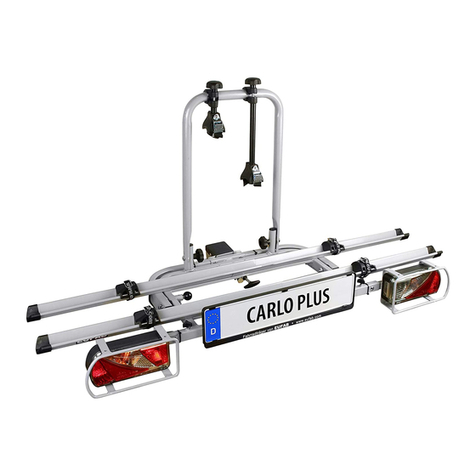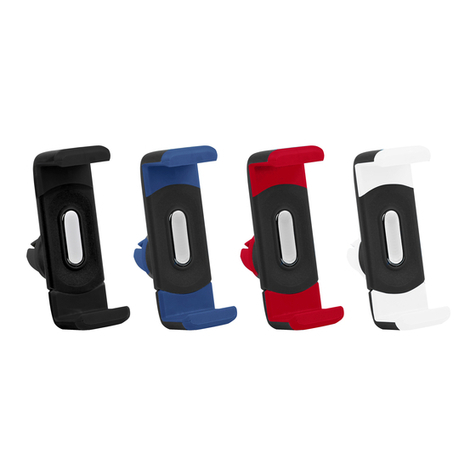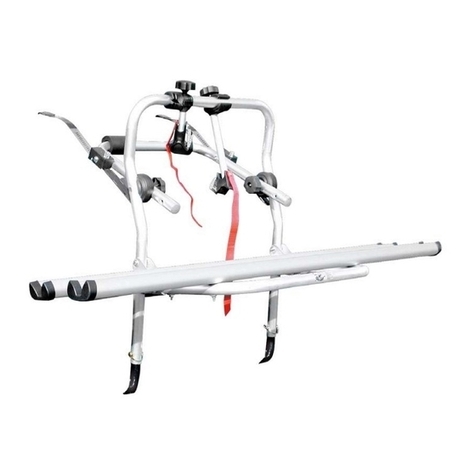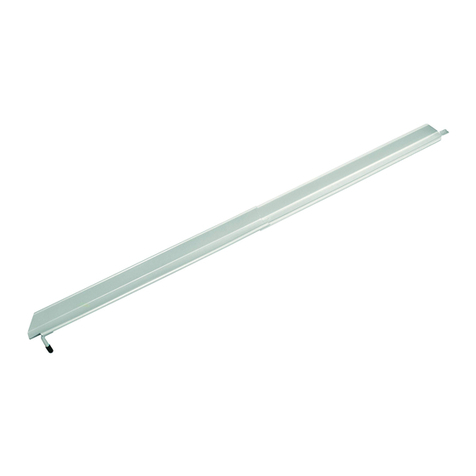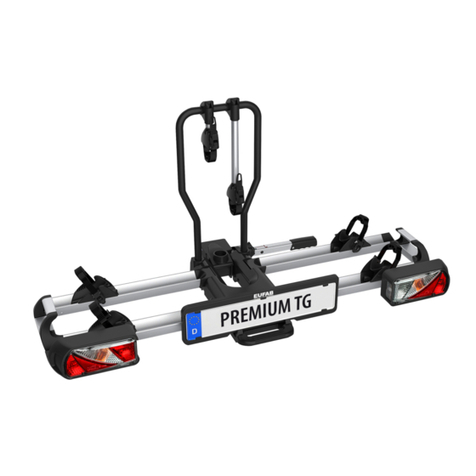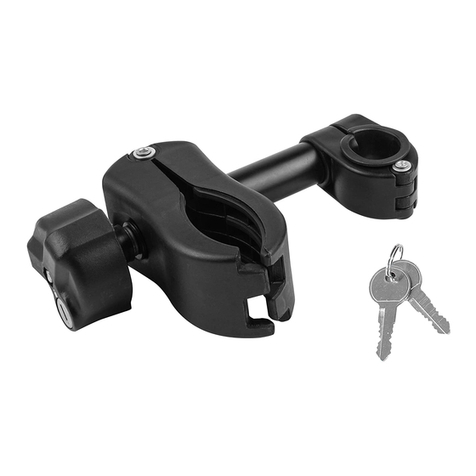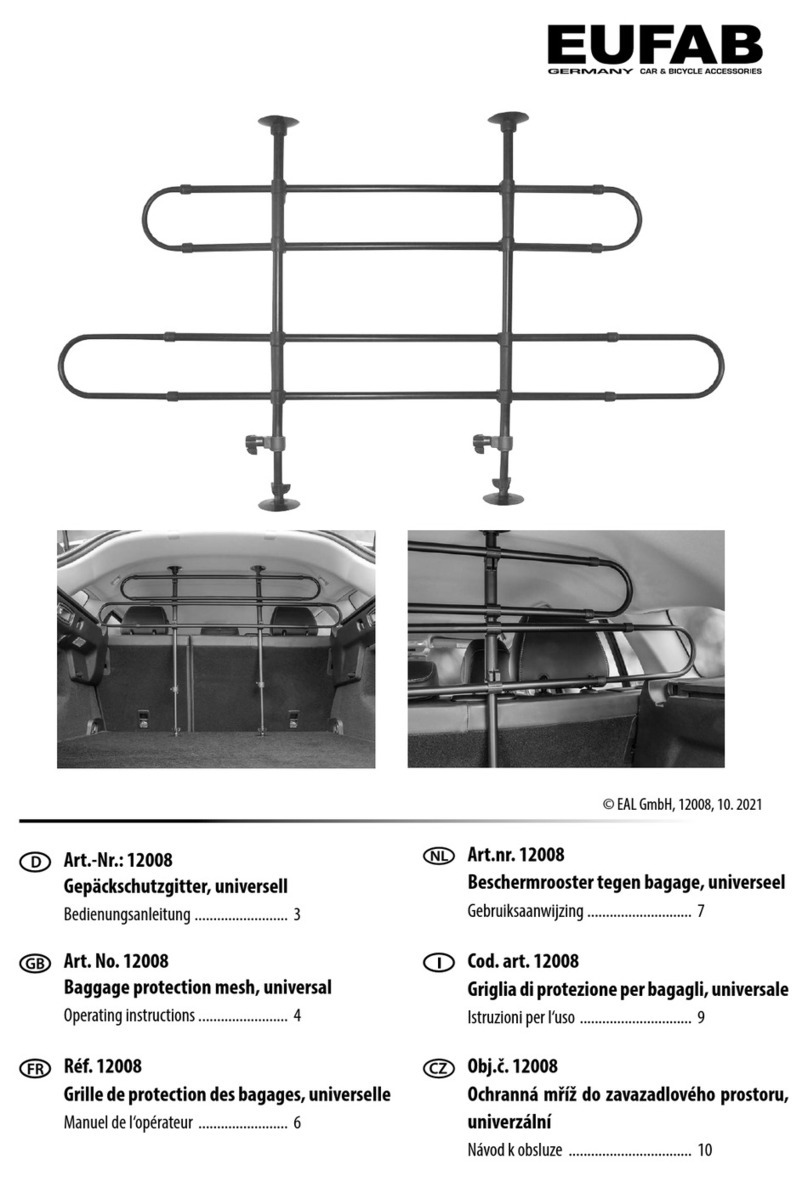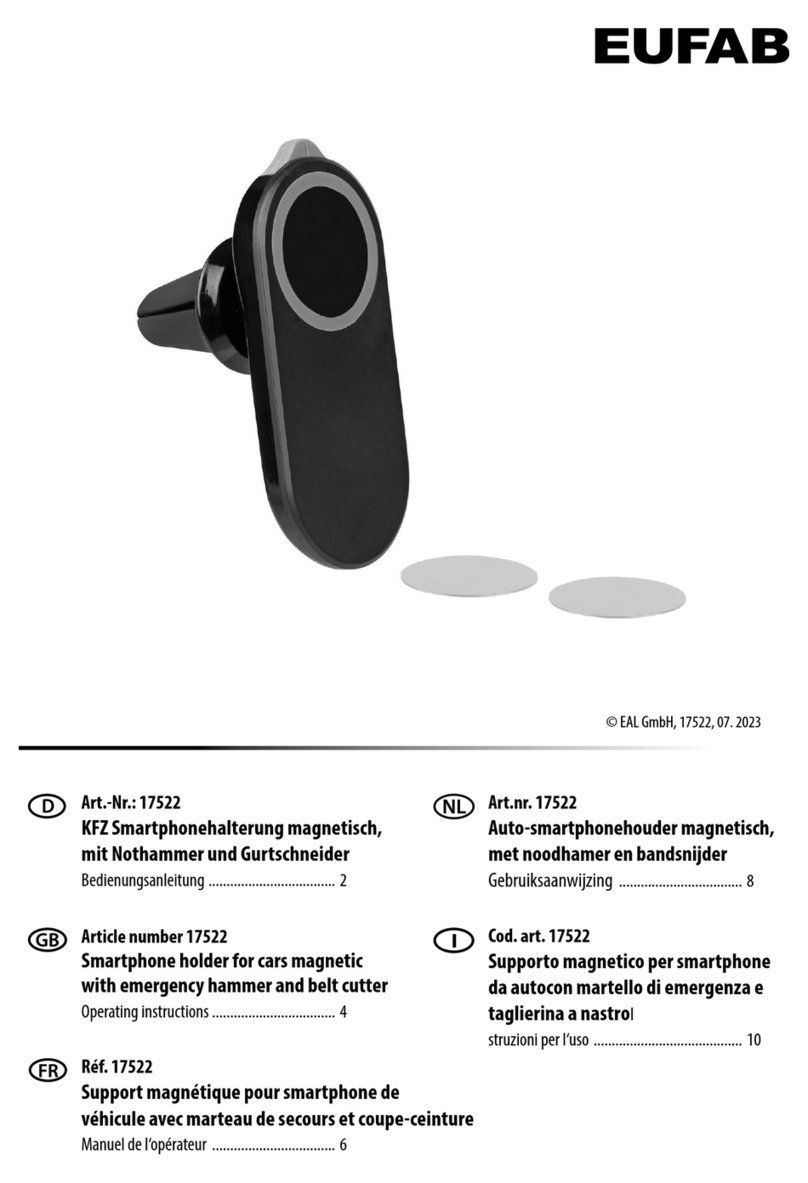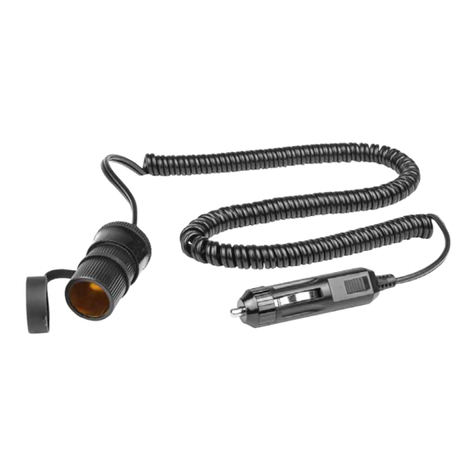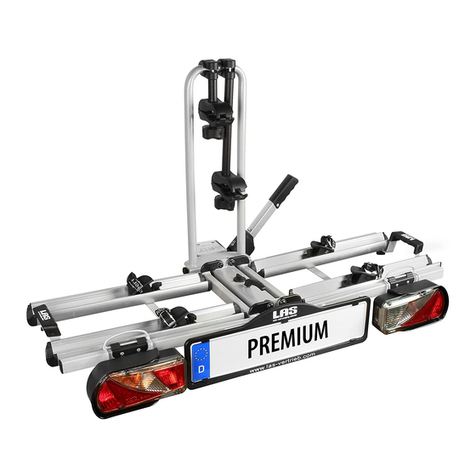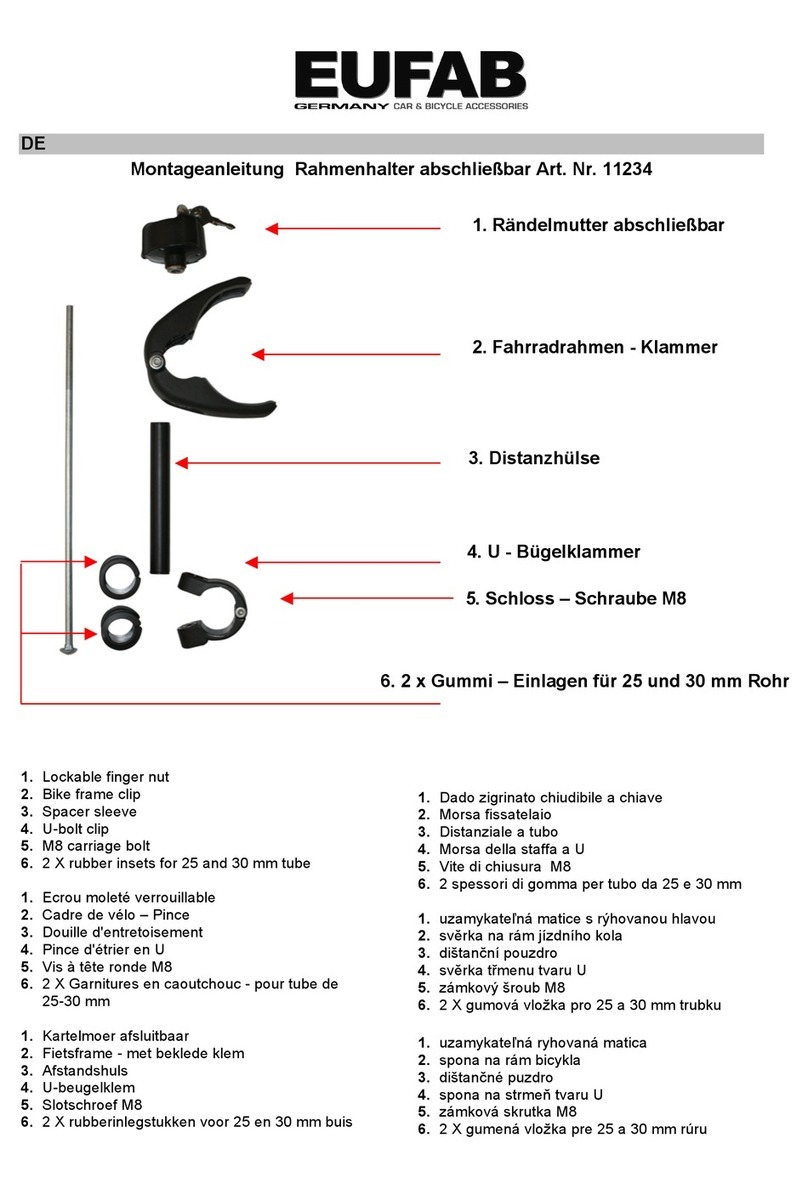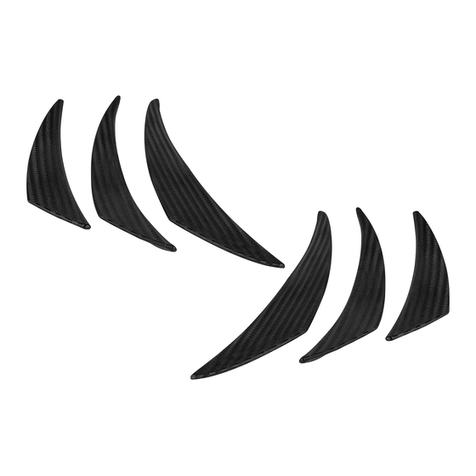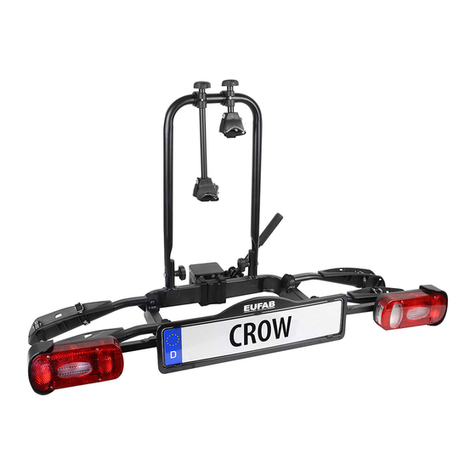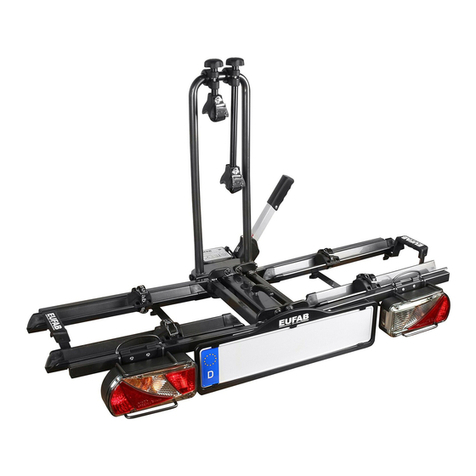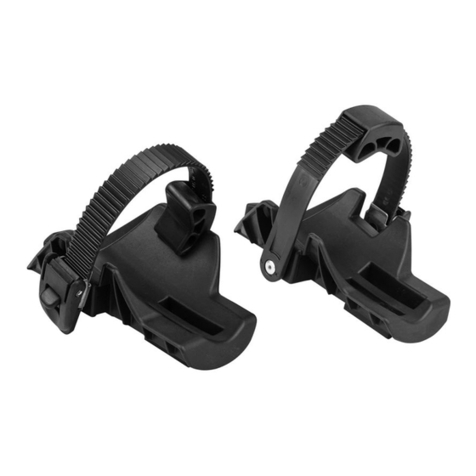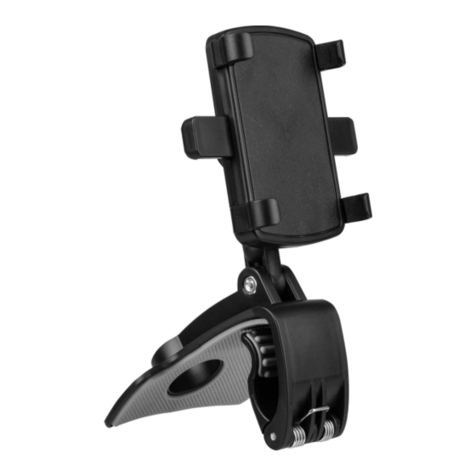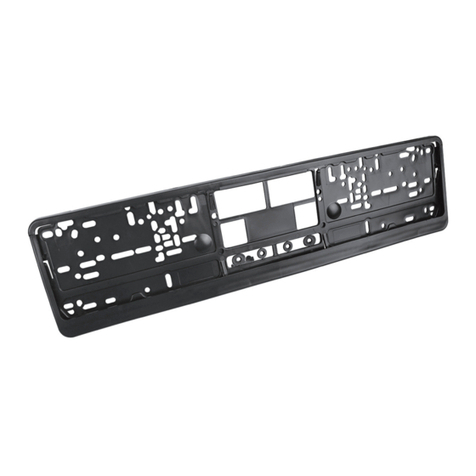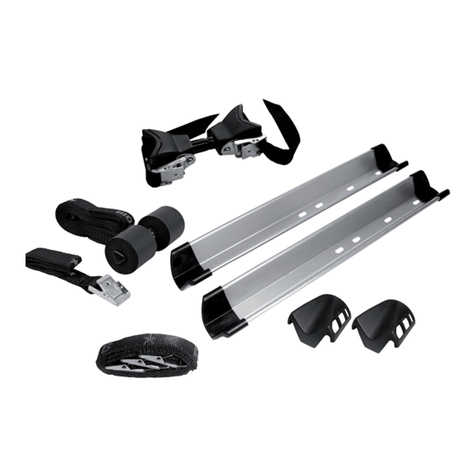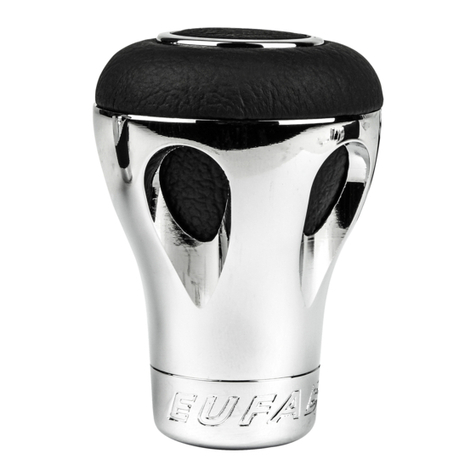Assembly picture 1
All screws should be treated with oil or grease to ensure long-term easy movement. First,
screw the base to the pre-assembled carrier table. Fold the swing frame downwards by first
unlocking the securing mechanism at the side. The plate with the receptacle for the securing
bolt as well as both rests for the swing frame (see photo) must be placed up against the outer
carrier table and screw the base into place using the M8 x 50 screws, 8 mm washers and M8
nuts. The screw heads should all go from inside to out. Before tightening the screws up, fold
the swing frame back and secure using the two securing bolts. Now screw the M16 x 130
screw approximately 1 cm into the base. Then check to make sure that both securing bolts
can be shot home.
Assembly picture 2
Place the U – bracket onto the designated tube sleeves and secure with 2 lock screws, (M8 x
60) washers (8 mm) and knurled nuts (M8). Insert the pre-assembled lamp holders with the
13-wire plug into the end of the tube of the swivel frame. Ensure that the lamp holder with the
reverse light is on the right (see photo). The lamp holders have two setting options. For vehi-
cles that are wider than 1740 mm (see section 13 in the car documents), the lamp holders
need to be mounted in the outer position (see photo). For vehicles that are less wide than
1740 mm, the inner hole distance needs to be selected. Align the lamp holder with the 2 des-
ignated knurled screws and insert the lock screws (M6 x 30) into the bore-holes (see photo –
slightly tighten the knurled screw).
Ensure that the lamps are mounted symmetrically.
Assembly picture 3
Assemble the wheel rails by placing the right wheel rail into a left wheel rail at the long holes.
The right wheel rails have a raised beaded edge on one side of the rail (see photo). Use the
short screws, washers and securing nuts for the inner bore-holes. First loosely screw the wheel
rails to the swivel frame in the central position. (lock screws M6 x 20, washer and Nut M6). Pull
out the wheel rails until the outer bore-holes of the swivel frame can be used for attachment
purposes. Secure and tighten all screws on the wheel rails.
Important information:
The attachment parts for the registration plate holder are enclosed as press-out parts in the
registration plate holder itself. Attach the cable of the lighting unit using the cable tie below the
support table. Ensure that this cable is not caught or damaged when the cycle rack is folded
up or down.
Press the stoppers onto the wheel rail from the top, 2 on the right and 2 on the left. Ensure
that the higher side of the wedge shape is pointing towards the centre of the carrier. Now
thread the small strap through the middle hole on the stopper and under the wheel rail to the
opposite side, back through the middle hole. You will also need the 2 remaining belts later, in
order to fix the bikes correctly. Open the frame holder clips and place these around the U-bolt
with the insets. Reclose the clips using the finger screw. (Do not yet tighten).
Assembly of the cycle rack onto the towbar
Ensure that the towbar is undamaged, clean and free of grease. The cycle rack is placed on
the towbar from above. Loosely screw the cycle rack with the screw M16 and align parallel to
the rear of the vehicle. Tighten the screw M16 using the supplied key until the rack is attached
securely. Check that the rack is securely on the towbar and that the cycles are firmly in
position on the rack. Check the function of the cycle rack lighting system regularly.
Fixing the bikes to the rear bike carrier
Place the first bike in the first bike rail (nearest to the vehicle) and fix it on the U-bolt using the
short frame holder.
Fix the running wheels by pressing the stoppers to the wheel and tightening the belt.
Caution: the front wheel must also be secured with a small strap to prevent it from
turning. See photograph.
Here, the frame holder clip is used for fixing on the U-bolt and the strap opposite for fixing on
the bike. The second bike is normally to be placed in the second rail in the opposite direction
